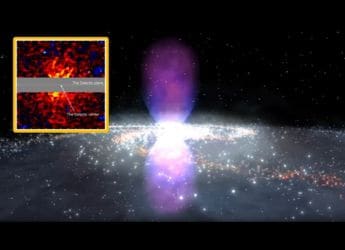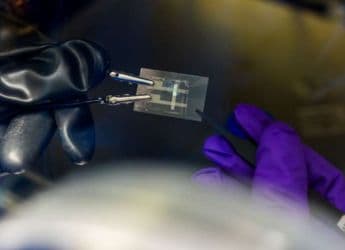- Home
- Science
- Science News
- Uranus and Neptune May Be More Rock Than Ice, New Research Suggests
Uranus and Neptune May Be More Rock Than Ice, New Research Suggests
A new study challenges the long-held belief that Uranus and Neptune are ice giants.

Photo Credit: NASA, ESA, Mark Showalter (SETI Institute), Amy Simon (NASA-GSFC), Michael H. Wong (UC Berkeley), Andrew
Hubble image shows Uranus and Neptune as two pale blue orbs on a black backdrop.
The space scientists have long referred to Uranus and Neptune as ice giants due to the belief that their interiors are abundant in ice (frozen water), ammonia, and other ices. However, new research argues that we actually know very little about what is going on inside and gives these planets a new name of rocky giants. An example of this is that researchers ran numerous random interior models and compared them with the sparse data that we do possess, as opposed to using old assumptions.
Surprising Interiors
According to the new pre-print study, researchers used a fresh, assumption-free modeling approach, generating many possible interior structures for each planet. This yielded a startling result: scientists say we “may not have any idea what the interiors of Uranus and Neptune are really like”.
For example, one model gave Uranus a rock-to-water ratio from 0.04 (nearly all water) to 3.92 (nearly all rock), and Neptune's composition is similarly unconstrained. In effect, an extensive range of interior structures remains consistent with the sparse data, so the “ice giant” picture is far from certain.
New ideas of Formation and Exploration
If so, the name of the ice giant would be a misnomer. Uranus and Neptune might, in fact, have rocky material as much of their mass, perhaps more than of the Jovian or Saturnian. This would disturb models of the solar system formation: scientists would have to provide an explanation of how much solid material was accumulated in these faraway orbits.
To end the debate, scientists assert that the composition of Uranus or Neptune can be finally discovered only after a special mission to the Kuiper Belt, like an orbiter.
Get your daily dose of tech news, reviews, and insights, in under 80 characters on Gadgets 360 Turbo. Connect with fellow tech lovers on our Forum. Follow us on X, Facebook, WhatsApp, Threads and Google News for instant updates. Catch all the action on our YouTube channel.
Related Stories
- Samsung Galaxy Unpacked 2025
- ChatGPT
- Redmi Note 14 Pro+
- iPhone 16
- Apple Vision Pro
- Oneplus 12
- OnePlus Nord CE 3 Lite 5G
- iPhone 13
- Xiaomi 14 Pro
- Oppo Find N3
- Tecno Spark Go (2023)
- Realme V30
- Best Phones Under 25000
- Samsung Galaxy S24 Series
- Cryptocurrency
- iQoo 12
- Samsung Galaxy S24 Ultra
- Giottus
- Samsung Galaxy Z Flip 5
- Apple 'Scary Fast'
- Housefull 5
- GoPro Hero 12 Black Review
- Invincible Season 2
- JioGlass
- HD Ready TV
- Laptop Under 50000
- Smartwatch Under 10000
- Latest Mobile Phones
- Compare Phones
- Poco F8 Ultra
- Poco F8 Pro
- Huawei Mate 80 RS Master Edition
- Huawei Mate 80 Pro Max
- Huawei Mate 80 Pro
- Huawei Mate 80
- Huawei Mate X7
- Honor 500
- Asus ProArt P16
- MacBook Pro 14-inch (M5, 2025)
- Poco Pad M1
- Poco Pad X1
- Honor Watch X5
- Huawei Watch Ultimate 2
- Acerpure Nitro Z Series 100-inch QLED TV
- Samsung 43 Inch LED Ultra HD (4K) Smart TV (UA43UE81AFULXL)
- Asus ROG Ally
- Nintendo Switch Lite
- Haier 1.6 Ton 5 Star Inverter Split AC (HSU19G-MZAID5BN-INV)
- Haier 1.6 Ton 5 Star Inverter Split AC (HSU19G-MZAIM5BN-INV)

















